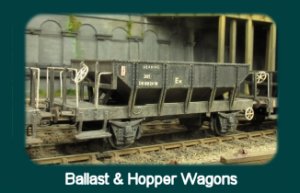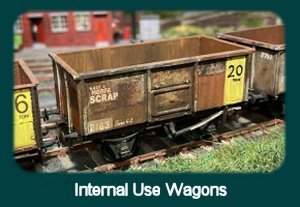*****************************************************************************************************************************************************************
Departmental Open & Spoil Wagons
*****************************************************************************************************************************************************************
A variety of open wagons for carrying everything associated with departmental use,
from track materials, concrete trunking, sleepers and spent ballast / spoil.
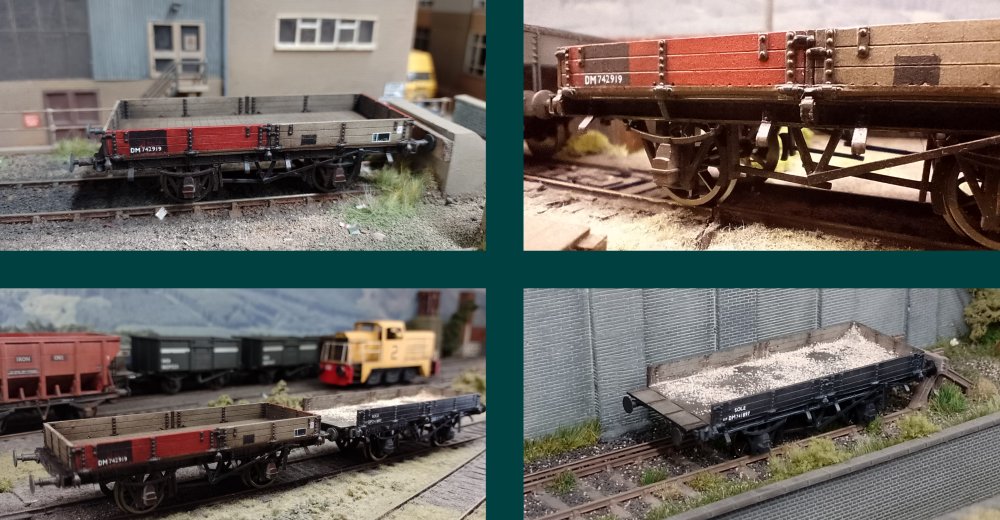
Sole wagons. These were LMS designed Ballast wagons built in 2 batches of over 3000
wagons. They had drop sides and end doors which could be lowered within the length of
the buffers so extended loads of rail etc could be carried across several wagons. This
practice was less common as rail lengths increased and they was generally used for
ballast or spoil transport. Transfers for the early BR era by Cambridge Custom
Transfers for Sole, Haddock and Gannets.
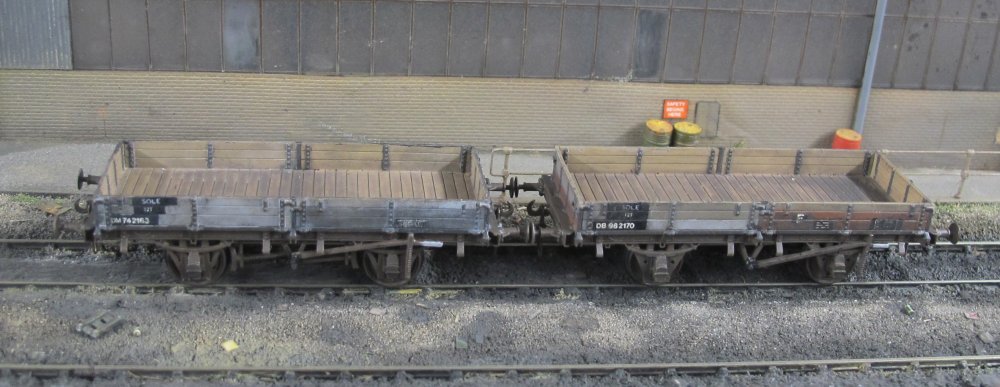
Ex-LMS Sole DM742163 and a BR Sole DB982170.
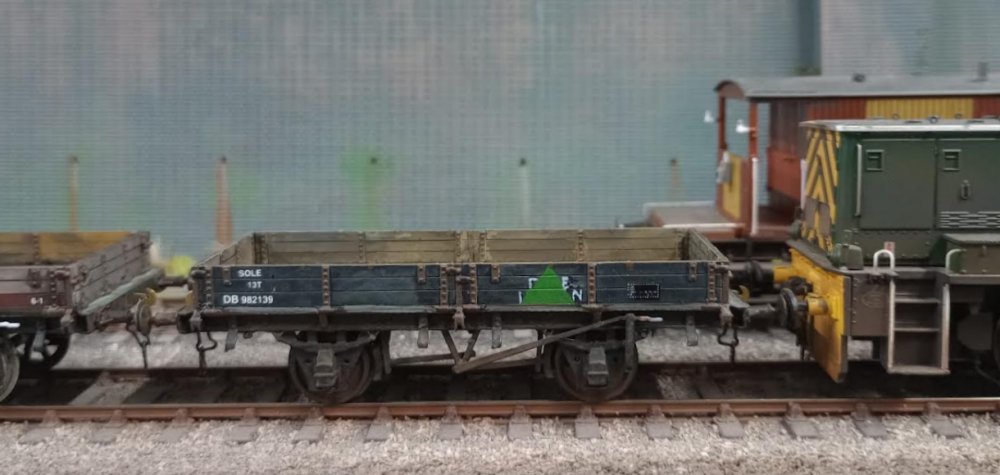
BR version Sole dia 1/565. BR built 500 after nationalisation with sturdier axleguards
and some with plate axleboxes.
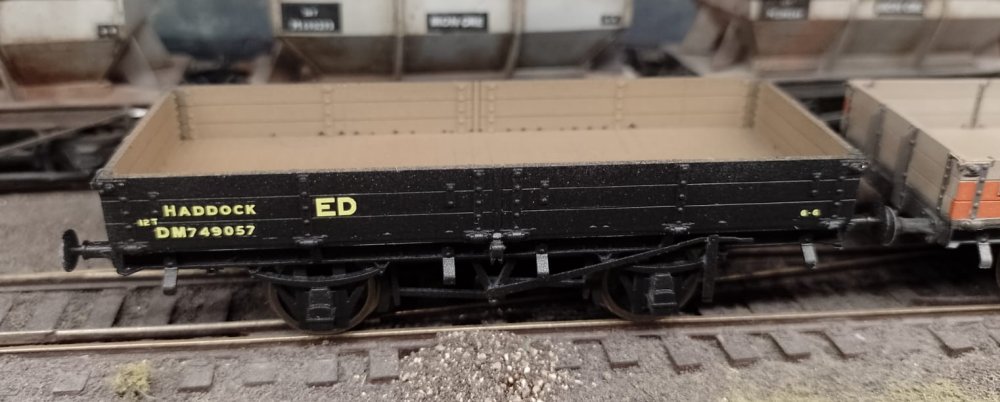
The LMS Haddock dia 1/621 shares the same underframe as the Sole, built by both the LMS and BR.
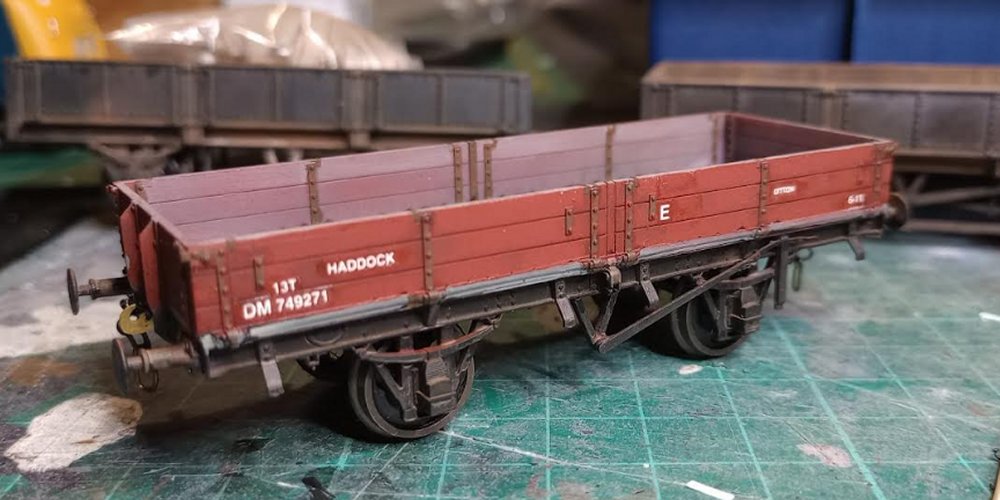
The body is longer than the Sole and has fixed ends. They were designed for transporting sleepers.
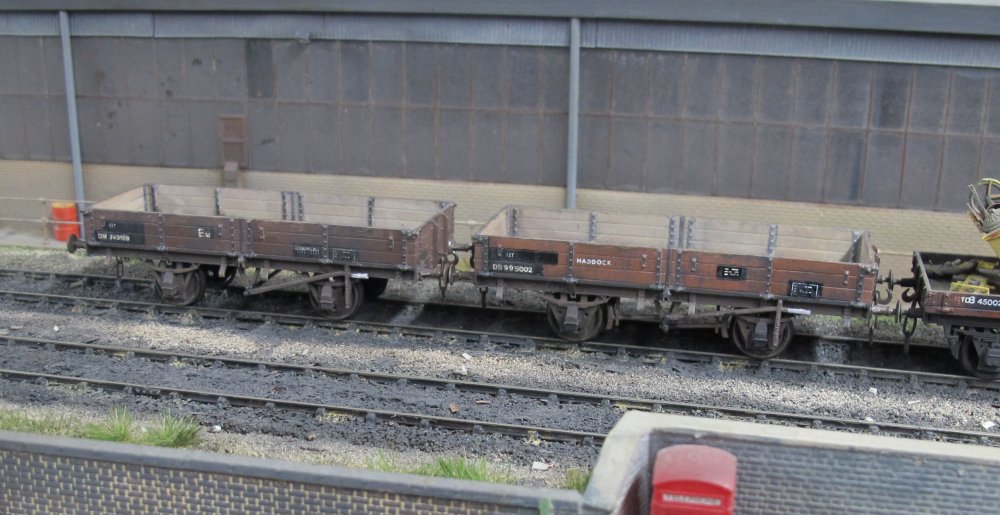
Ex-LMS Haddock DM749189 and BR Haddock DB995002, the BR version having different axleguards.
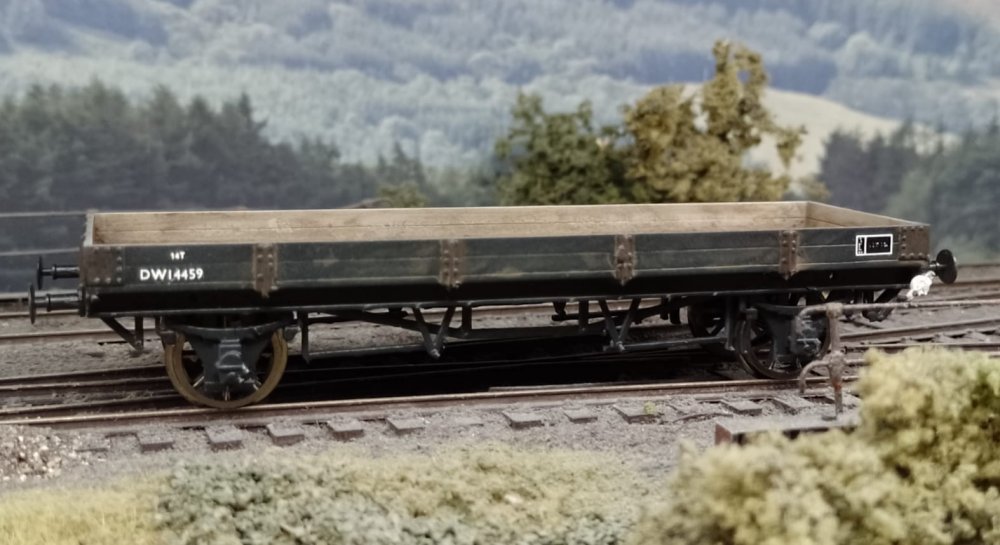
Ex-GWR Whiting. These wagons were used by the S&T department based at Reading. This version
has the old Dean / Churchward brakegear.
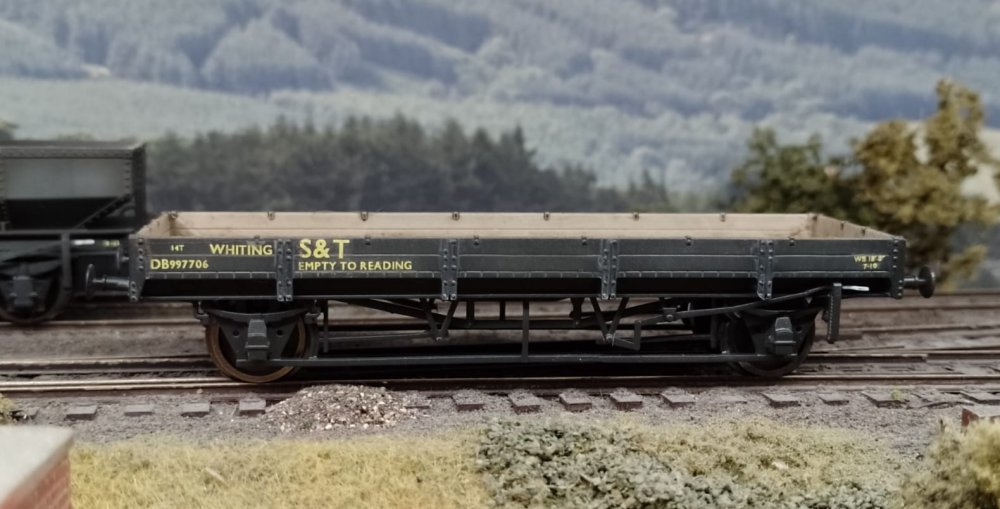
BR built some more Whitings to dia 1/622. There were a few batches from both Swindon and
Wolverton works.
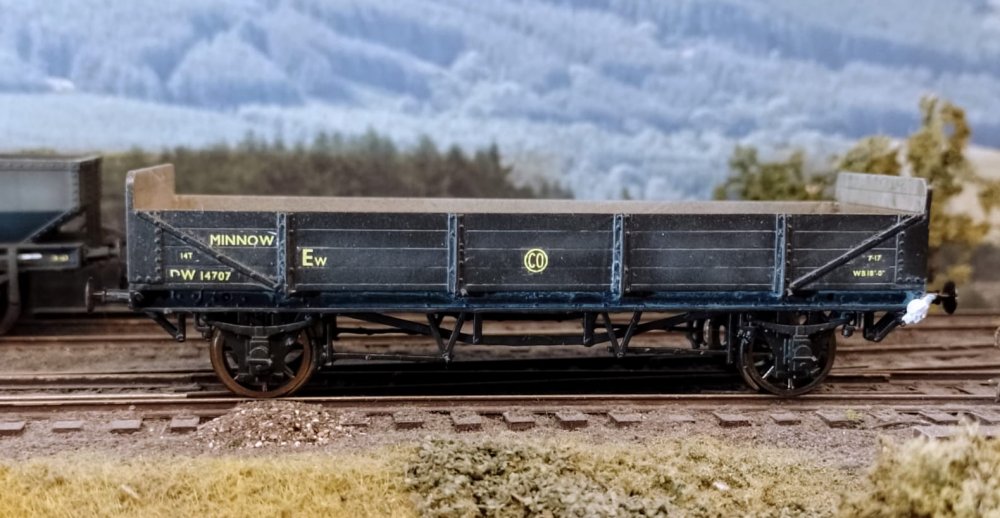
Ex-GWR Minnow. These wagons were built to carry sleepers for the engineers department. They
had 4 plank sides and 6 plank ends. There were a few different diagrams, and some of the
earlier wagons had a shorter wheelbase to this one shown.
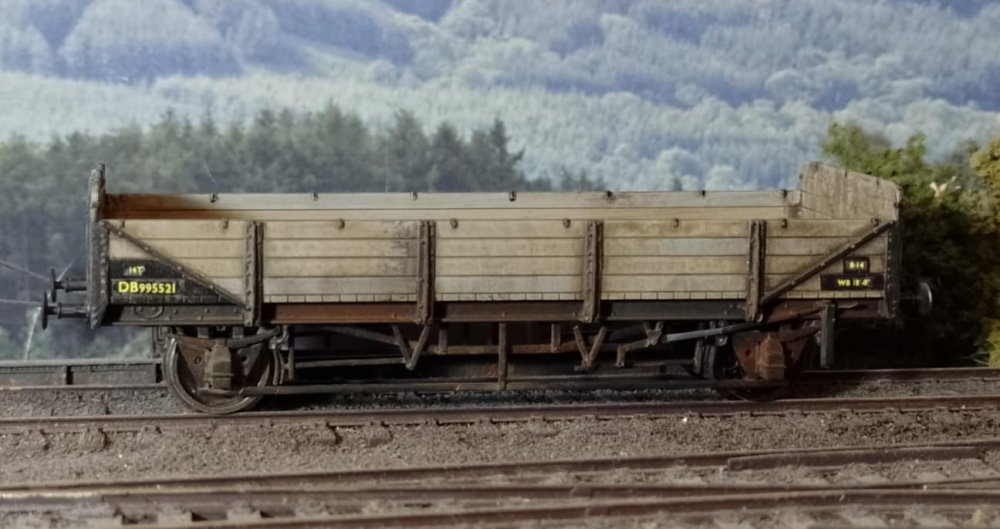
BR built Minnow with detail differences to the GWR type. Many of these wagons were stripped
of their bodywork to produce flat wagons on which machinery was added to work with ballast cleaners.
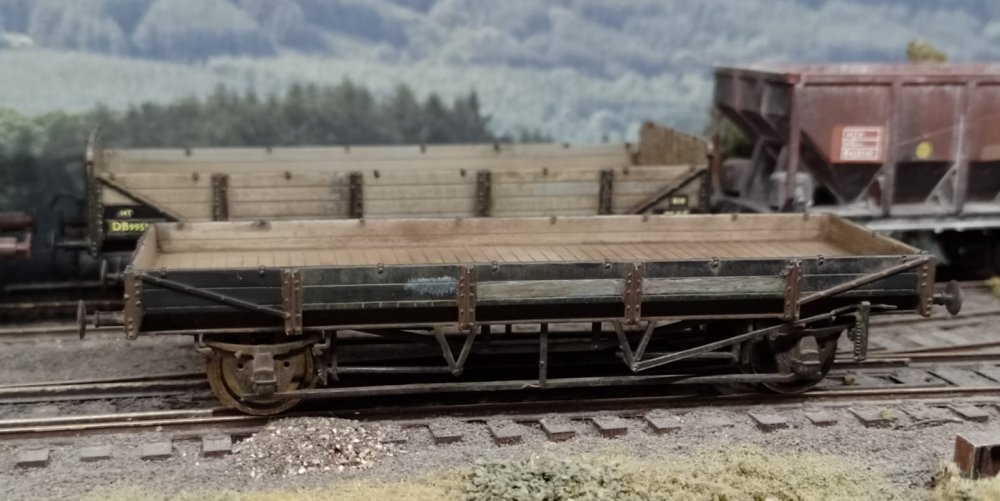
Here's a rare one. Awaiting decals is this cut-down Minnow which will become DB995500.
The planks were reduced to just 2 high all around. The other Minnow DB995519 was built with
just 2 planks to Whiting standard.

A Ling converted from a Chivers Tunny kit, as well as the usual Grampus and other
ex-revenue wagons, Bachmann tippler et al. The loads have yet to be weathered to
represent mixed spoil & rubble.

A Shock Open conversion of a steel highfit.

A spur-of-the-moment weekend purchase of a Oxford Rail ex-LNE 6-plank open. I was
rather impressed with this Ė the moulding shows a great deal of finesse and was the
easiest wagon Iíve ever converted to EM!
I removed the brakes on one side (the brakes are wrong on the model), trimmed a bit
off the back of the remaining shoes, pulled out the Oxford wheels to EM, cut off the
coupling blocks and fitted links to the existing hook, held with a sliver of plastic
strip. And that was that! Just a well-weathered paint job, some new engineerís markings and into service.

A cruel close up of a Bachmann ex-LMS Medfit. Transfers on all these are a mix of
Woodhead (long gone but superb!), Modelmaster and HMRS.

Here we have a Ratio GW five-plank. By 1972 the old unfitted service stock was on its
last legs and being replaced by transferred fitted opens. This one is hanging in there
and has even gained a later style number box.

Another Bachmann wagon Ė an LNER steel Highfit but with wooden doors and vacuum braked
by BR. Again featuring the mixed era of lettering common at that time.
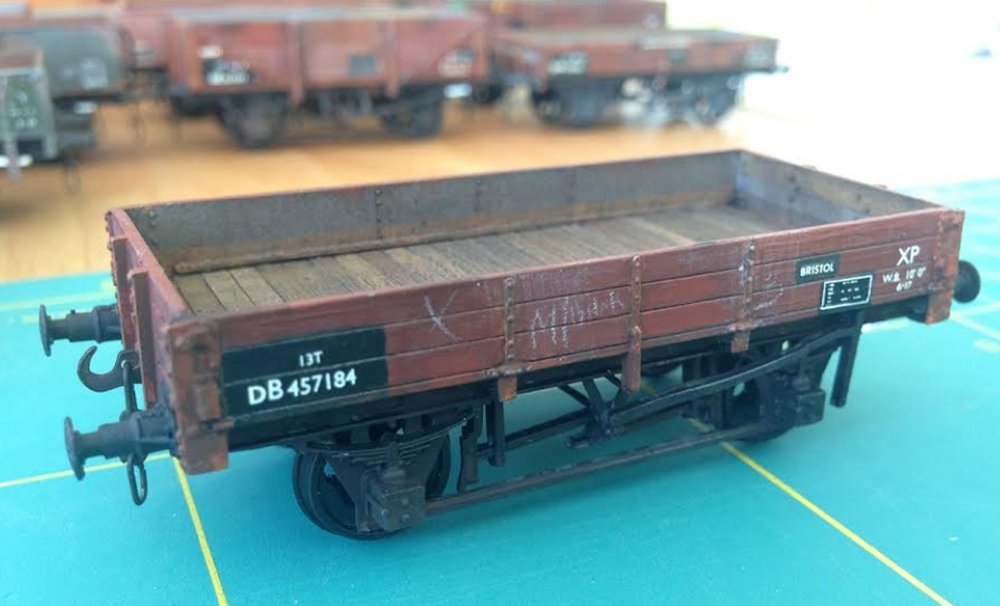
A Parkside Medfit but modified to represent one of the odd BR batch, most of which had
five-plank drop-sides. These were particularly unsuccessful and headed to the engineer
fleet very early on but the three-plank variety were very similar to the common LMS/BR
design with a few subtle differences.
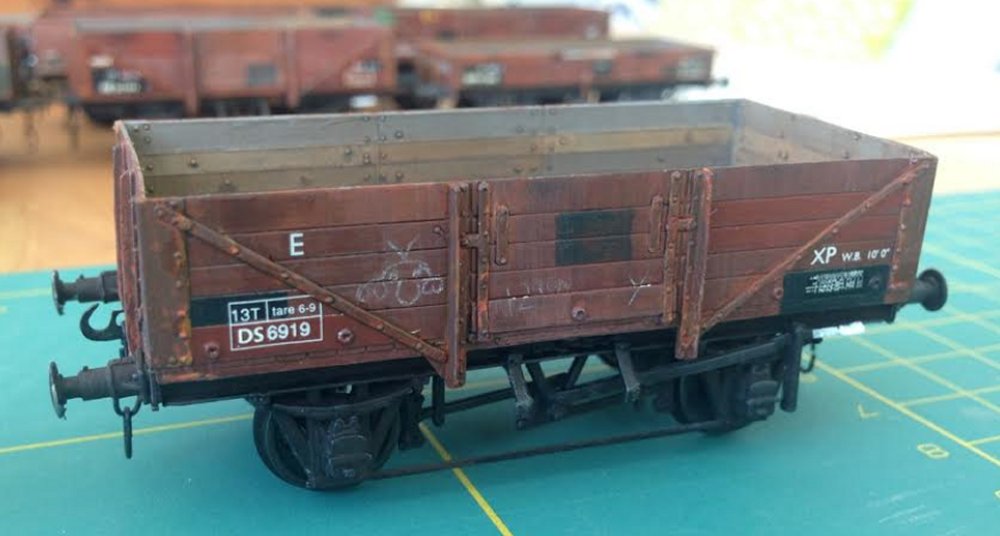
This one was from Cambrian and a very finely moulded kit. Some went to the SR and
some to the LNER (one of each is in the fleet).
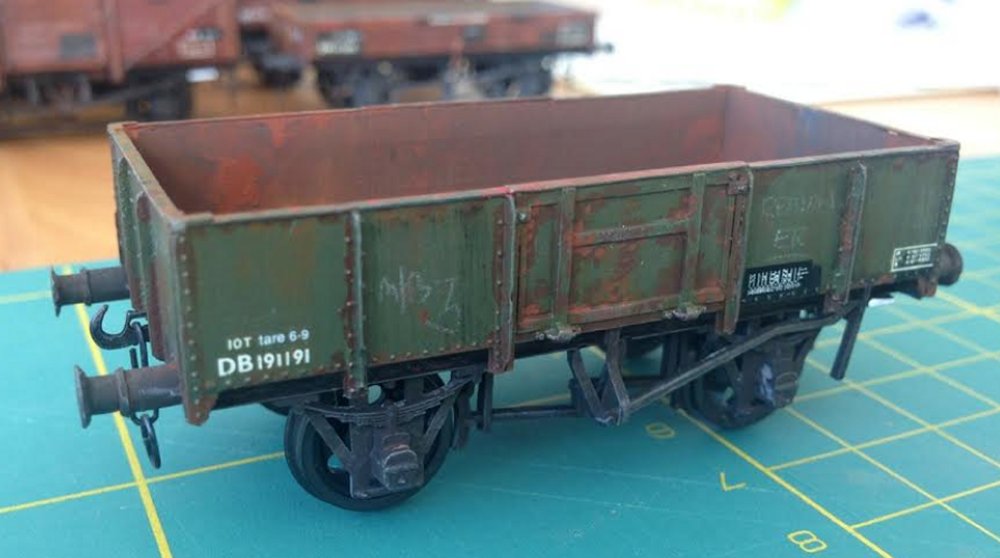
Here's an oddity found by Paul Bartlett on the ER. A former cupboard door mineral wagon
built for the SNCF and returned to BR in the 1950s. When and why this example was modified
is unclear. It was probably unique but there may have been more. As is clear a new drop
door was fitted and the body cut down. Here only because I had a made-up Parkside kit,
which couldnít be justified in service during 1972, and so itís briefly escaped from
Hitchin and headed west!

Having recently discovered an unloved Dapol 5-plank in a drawer I thought Iíd see if it could be made into something passable for the spoil fleet as the steel chassis it comes with is an easy convert to EM. That was the only good news about it! So off we went - first up was a carved strip of Evergreen styrene that fitted within the original steel channel.
With the strip secured next up was a sack-truck door. The original hinge detail was carefully lifted with a sharp scalpel and gently bent forwards. A piece of 10-thou strip of a suitable width was fitted behind with a thinner strip to kick out the bottom of the plank. The hinge and strapping was then stuck back down. The two door banger strips were also removed and one re-affixed centrally.
With the top plank reduced to get the overall height correct and a suitable LMS number chosen it was time for some well weathered paint. The lettering has since been toned down, in particular the Loco Coal brand, now virtually invisible as intended. Itís not immediately obvious that it started life with a steel under frame so the experiment was a success, if not one Iíll be repeating!

Seen here, a Parkside Grampus and a Chivers Finelines Lamprey, both with Fox Transfers lettering

Another addition to the departmental fleet is this SR built Tunny DS61977 for use in the
spoil train, built from a Chivers Finelines kit.

A pair of 16t minerals in departmental service. The loads were anything I could think of that
might have originated at either a diesel depot, carriage shed or the station. Once again raised
card bases were used as in the scrap fleet. Everything from rubbish bags to old pallets to
redundant posters and signs, some seat cushions and even an old bike. Something a bit different
for the traffic to Morfa Bank Tip.
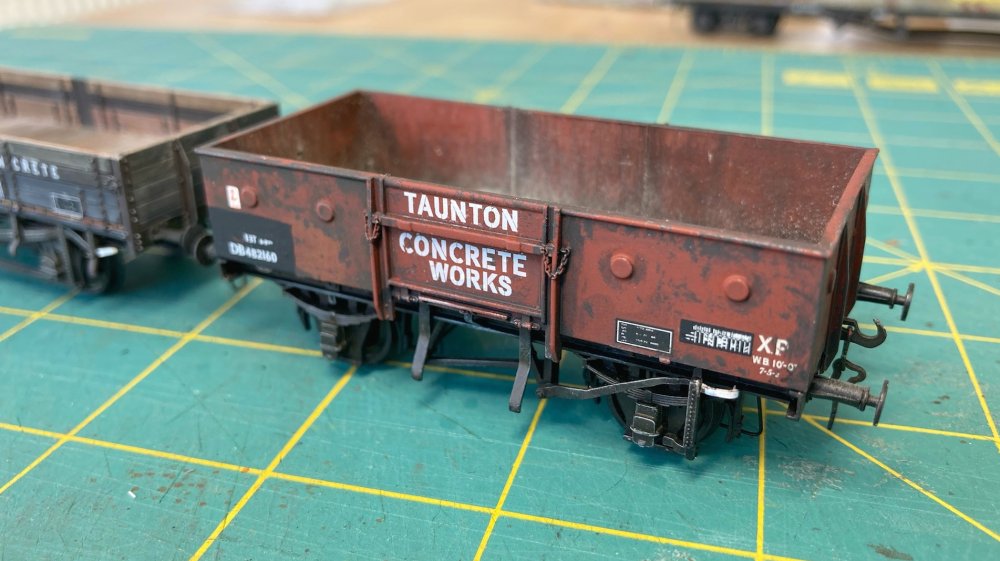
A slightly modified Bachmann RTR example. This wagon worked with the similarly lettered
sand tipplers between Stoneycombe Quarry and Taunton.
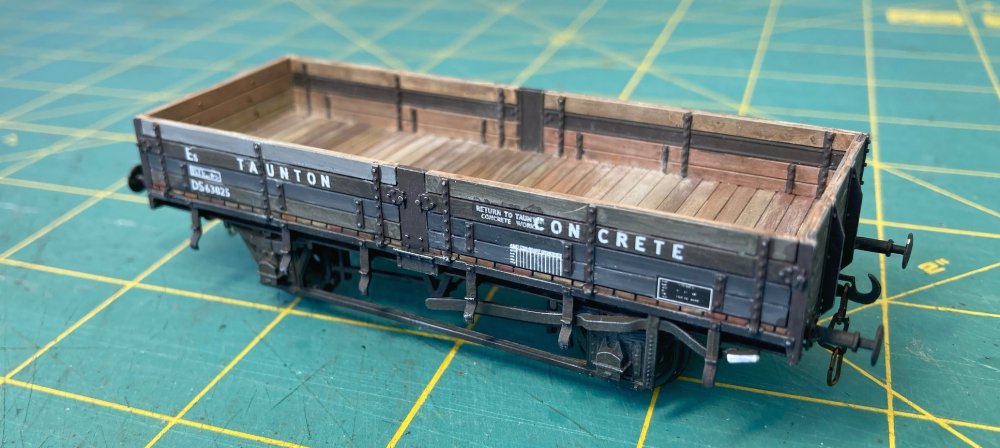
Taunton Concrete fleet. This ex-SR Ling was an early transfer and was used to carry lighter
concrete castings to site. It is a stock Chivers kits example, and as with all their models,
a well-moulded and straightforward kit to build. The second plank down on this type was a
steel channel, which is why it is painted rusty brown inside.
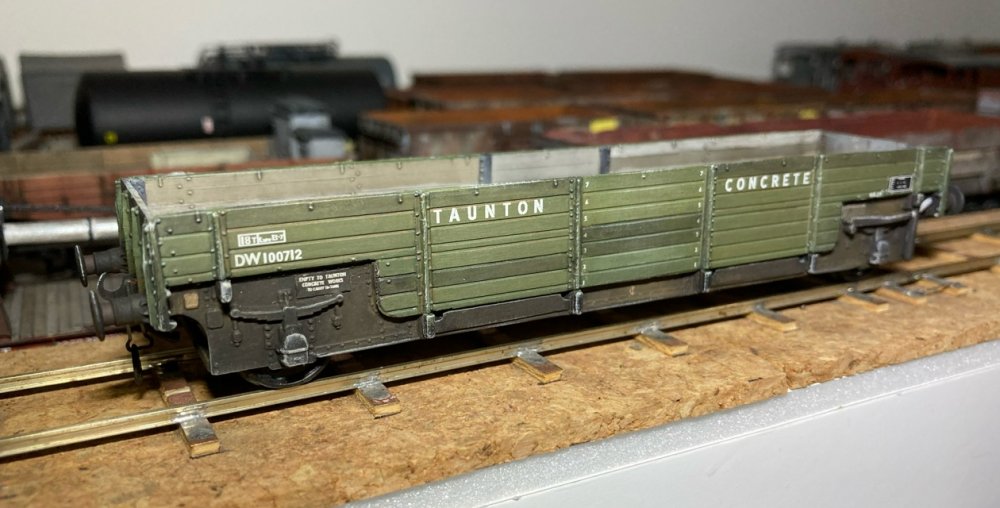
An ex-GWR sleeper wagon that ended up carrying concrete castings from Taunton Concrete Works.
A Cambrian kit built as per the instructions and makes up into a nice model of one of these unusual wagons.
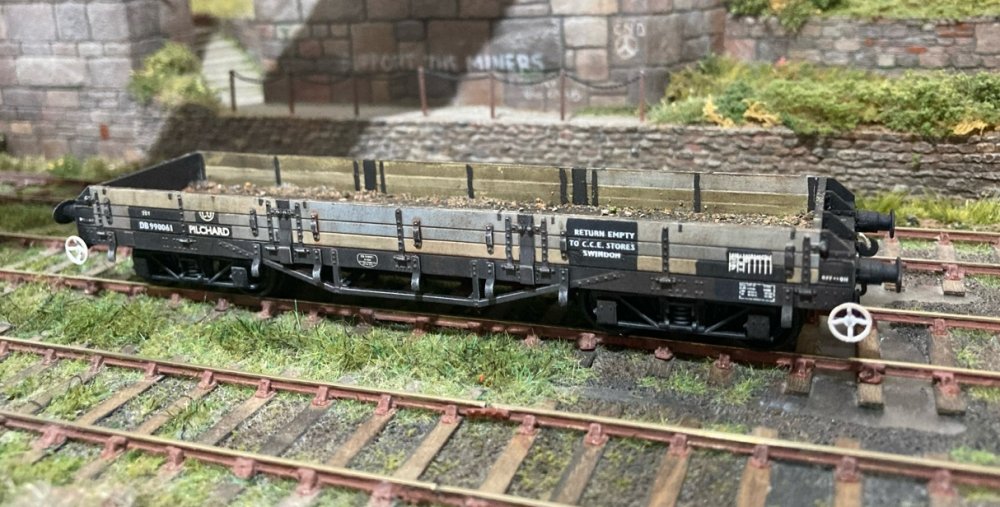
Oxford Rail Pilchard. These were very much a North Eastern type but one did make it to the WR
and worked out of the CCE sidings at Swindon to various parts of the WR over the years. When
photographed at Barry in the 1980s it even sported half a WR ĎCOí roundel so this was included
in the repaint. Some weathering and old ballast inside completed the reworking of this very
nicely moulded model. The EM conversion wasnít, however, straightforward as the wheel sets
featured a shorter axle and slightly smaller diameter wheels, so the very useful H&A Models
axle drill was used to increase the depth for the longer axles, as well as removing plastic
from the underside of the chassis to take the extra diameter of the Gibson wheels

A Cambrian Sturgeon A. This carries several lengths of rail hauled on board by the winch
from the rail set. It makes for an impressive wagon but does take up a lot of space!
*****************************************************************************************************************************************************************
